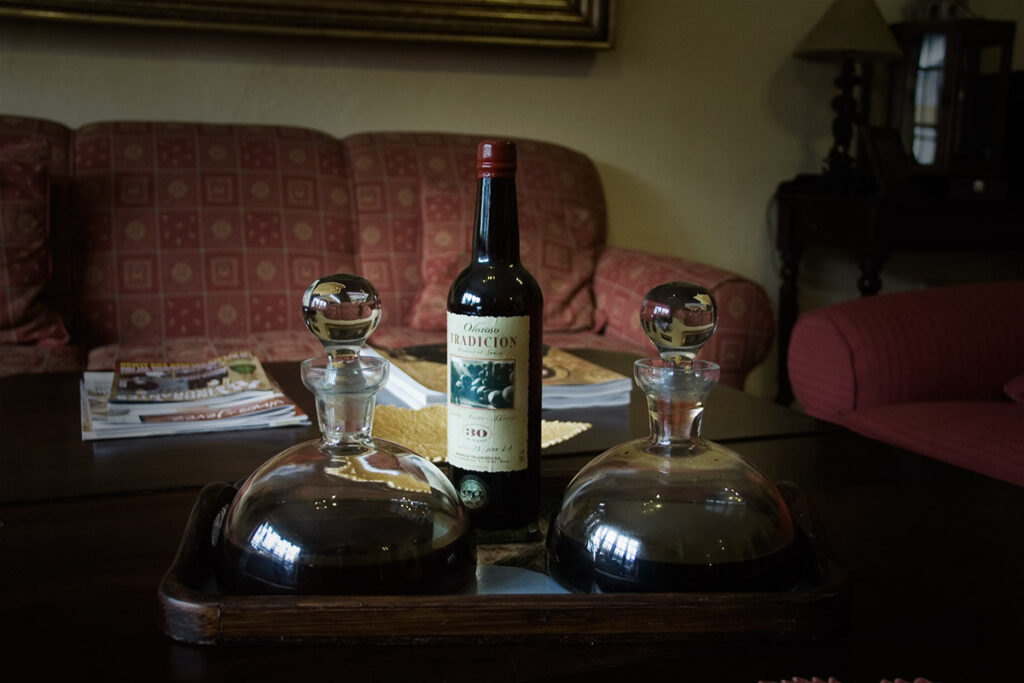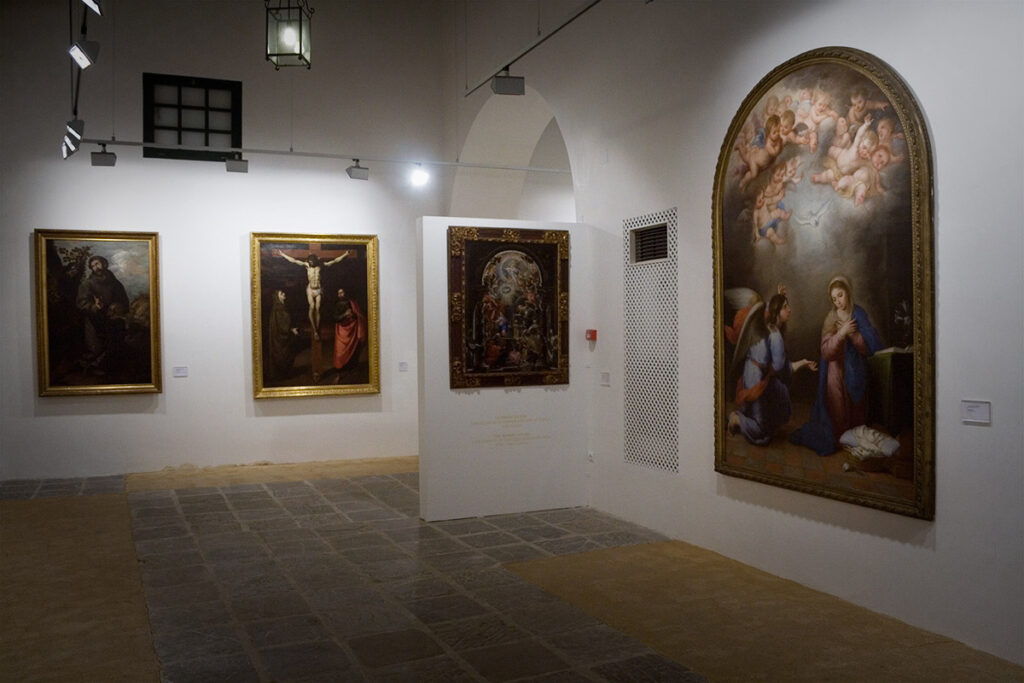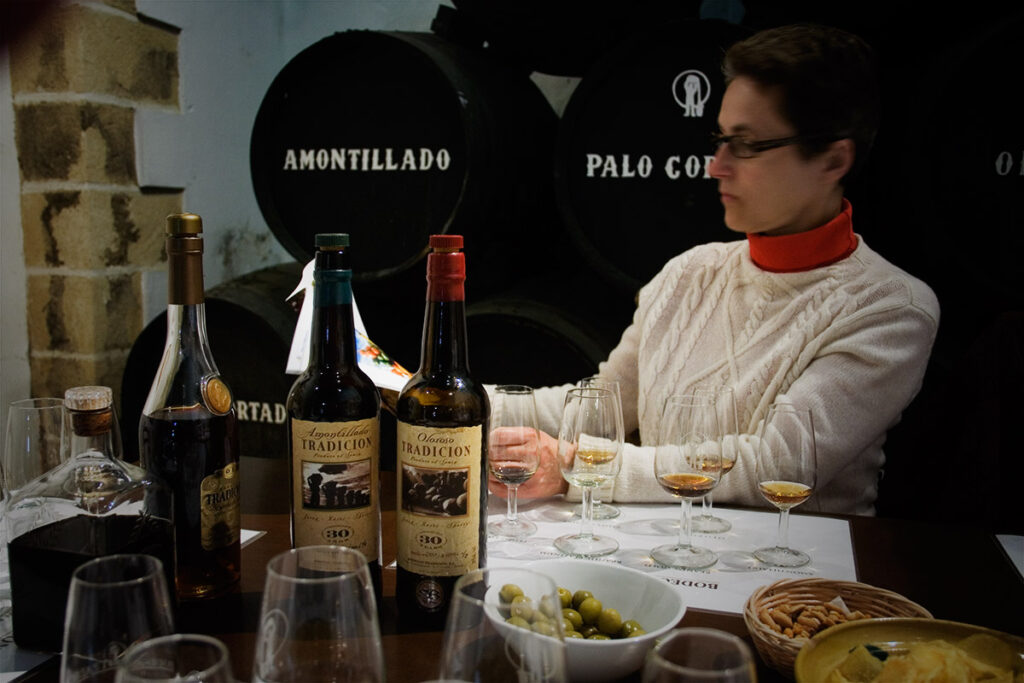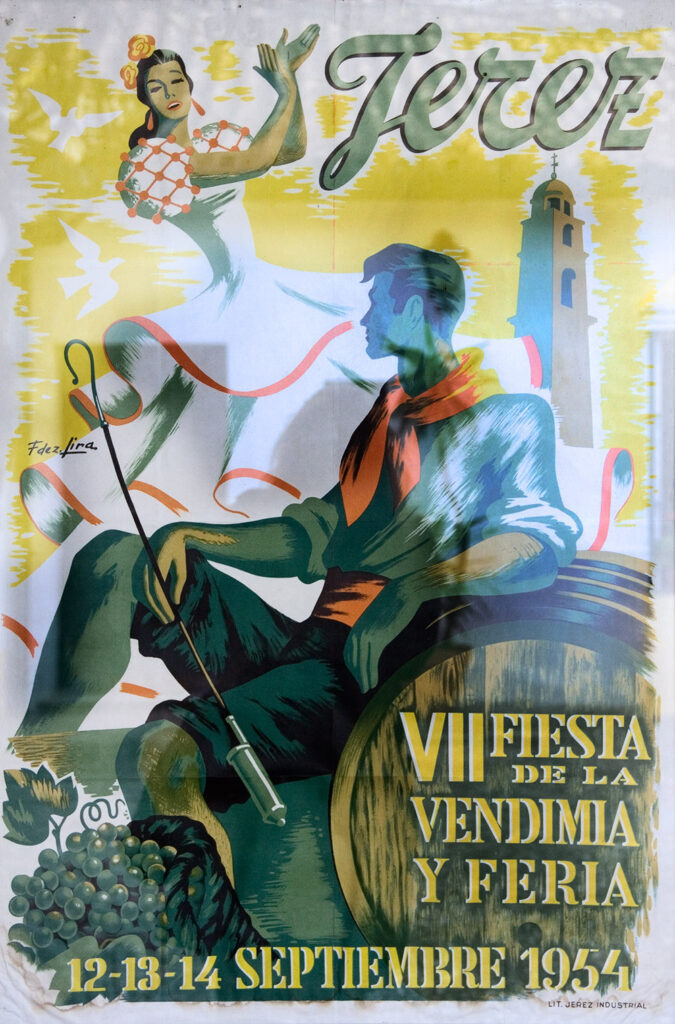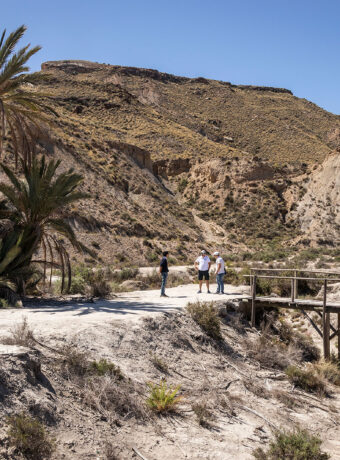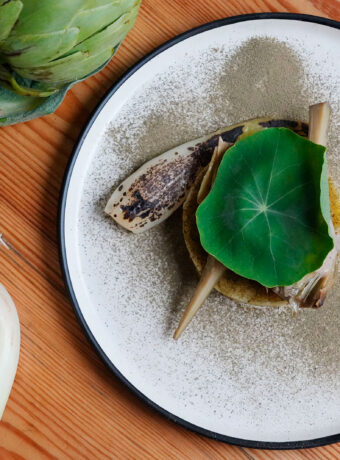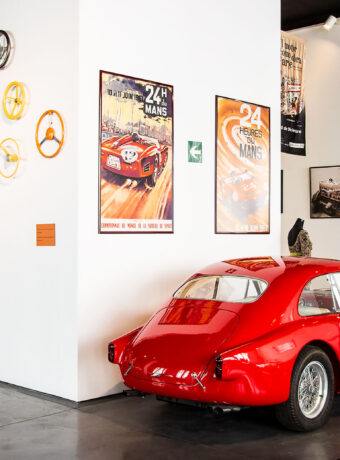The Andalusian city of Jerez de la Frontera is the capital of sherry. Take a tour of one or more of the city’s many bodegas, get an inside look at production and taste the Spanish national drink.
In the sherry capital, Jerez de la Frontera, sherry bodegas are dotted like dots on a flamenco dress. These bodegas, not to be confused with bars, produce deliciously fragrant sherry for every dish and taste.
Jerez, which is of Arabic origin, is the Spanish word for sherry, and Jerez de la Frontera (usually just called Jerez) is located in the Spanish sherry triangle between the towns of Jerez, Sancúlar and El Puerto de Santa Maria. Only the golden moor wine from this area can be called sherry, and the sherry trade association keeps tight control over both the planting of vines, production and ageing.
The triangle has made Andalusia famous for the sherry that, due to its unique microclimate, has been produced for over 3000 years. There are around 60 sherry bodegas in the region, 25 of which are in Jerez.
Here are three bodegas worth checking out. See how the sherry is produced and aged in the “cathedrals” and taste the delectable drops in the “sacristy”.
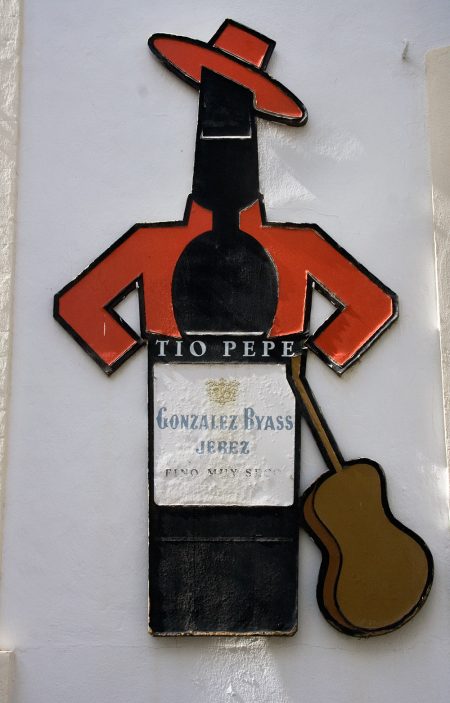 1. World’s largest sherry producer
1. World’s largest sherry producer
You’ll find big signs everywhere in Spain with Tio Pepe’s famous ‘sherryman’, and it’s also the sherry brand most often served in the country’s many bars. Tio Pepe was founded in 1835 by Manuel Mª González, one of the many English winemakers who have been extremely active in the town.
Bodegas Gonzalez Byass is close to the city’s cathedral. The guided tour begins with a tour of Tio Pepe’s vast grounds on a red vintage train. Here we pass the vineyards, the large buildings where the sherry is produced and stored, and several versions of the well-known Tio Pepe man.
After the train ride, we are invited to a film screening where we learn the story of the founder, who named Tio Pepe after one of his uncles, and how he quickly created a thriving business and became the leading exporter of sherry to England.
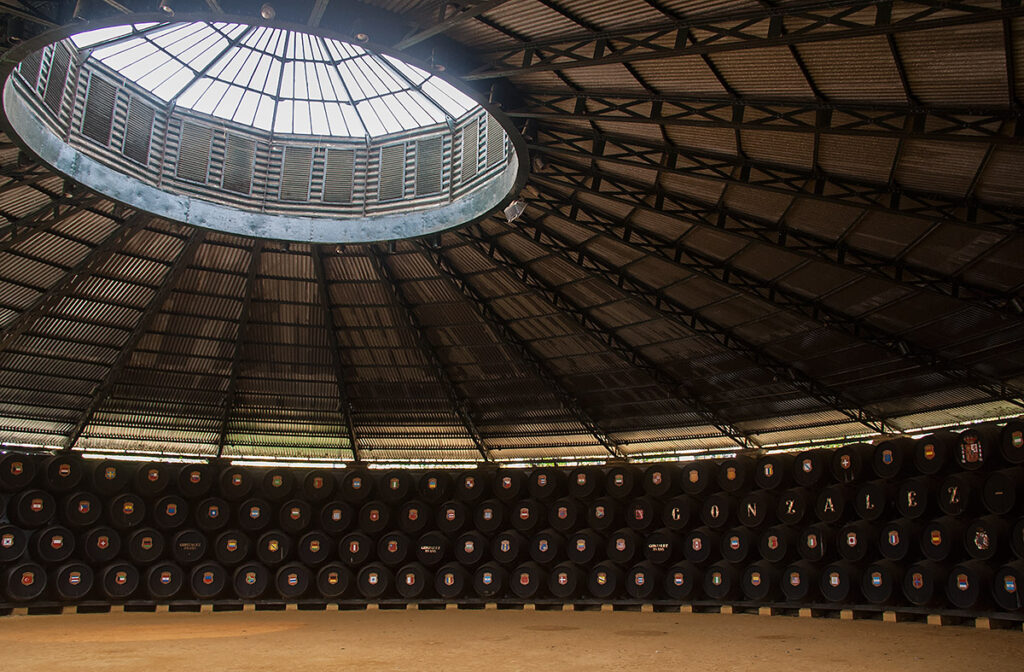
A scent of brandy
After the screening, the professional Tio Pepe guide in red uniform will take you to the old production halls and warehouses, which are now only used to show films to visitors. One of the warehouses, Bodega de la Concha, is a fine example of bodega architecture from 1869.
We are introduced to the different sherry types produced by Gonzalez Byass, from the bone-dry Fino, Gonzalez Byass’ bestseller, to the sweet dessert sherry Cream, which is exported to the English in large quantities. Brandy is also produced here and we get to smell three varieties, see old brandy bottles and the hall where brandy was produced over 100 years ago.
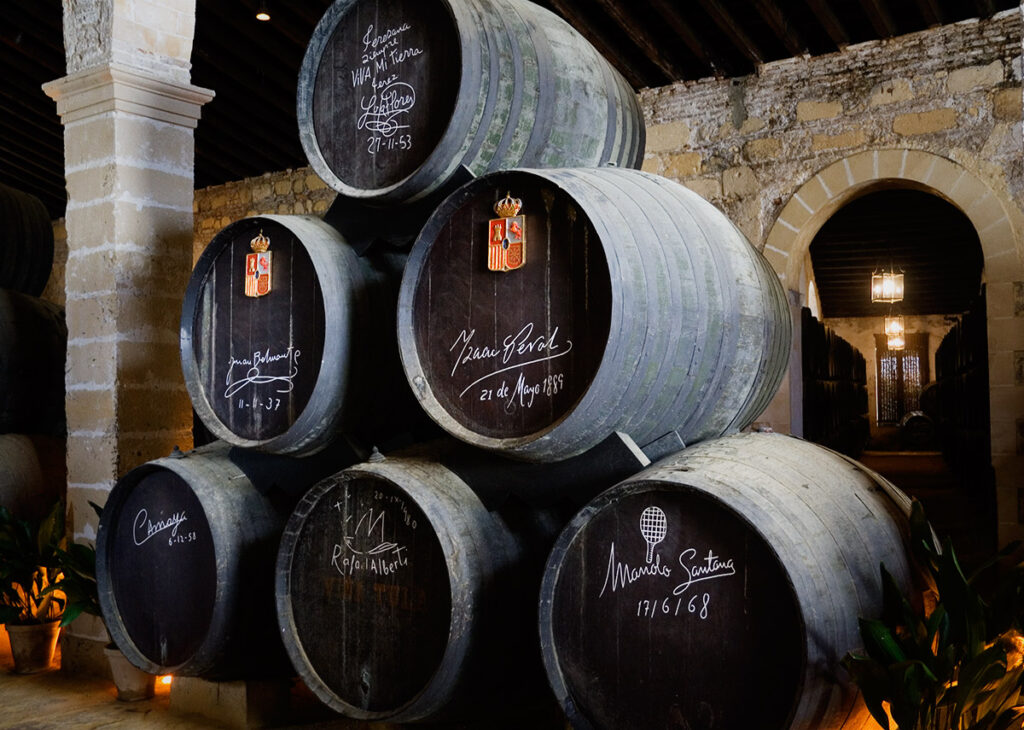
Famous autographs on the sherry casks
It’s time for one of the big, dark halls, lit only by lanterns from the ceiling, where the sherry is stored. The large 600-litre sherry casks are stacked tightly in the special Solera system. In the Solera system, the sherry casks are stacked in long rows with at least three layers, the oldest sherry being at the bottom and the youngest at the top.
We don’t get much information from the guide about the production itself, here there is more focus on Tio Pepes size and products. “Do you hear the mouse?” the guide suddenly exclaims, telling us that Tio Pepe has a house mouse so spoiled that it will only drink Pedro Ximénez sherry. So of course they serve it every day.
Many celebrities have passed by Tio Pepe, and the guide proudly shows a number of barrels, where among others, Pablo Picasso, film director Orson Welles, flamenco dancer Lola Flores and tennis player Manolo Santana have signed their autographs on the sherry barrels.
The tour ends with a sherry tasting without a guide, so I can’t ask about the two glasses of sherry we are served. My guess is that it’s a dry Fino and a sweet Cream, but I don’t like the taste. One is too sharp and the other too sweet (I’m guessing it’s the cheapest in the house), so I’m not tempted to buy anything in the store either. Despite the disappointing taste experience, Tio Pepe is worth a visit because you get an insight into the world’s largest sherry producer and its history.
Bodegas Tio Pepe – Gonzalez Byass
Calle Manuel María González 12 (show on map)
Guided tours in English are Monday to Saturday at 12, 13, 14 and 17. Sundays at 12, 13 and 14.
Tickets are available on the website and include a tasting of 2 or 4 types of sherry, as well as with or without tapas.
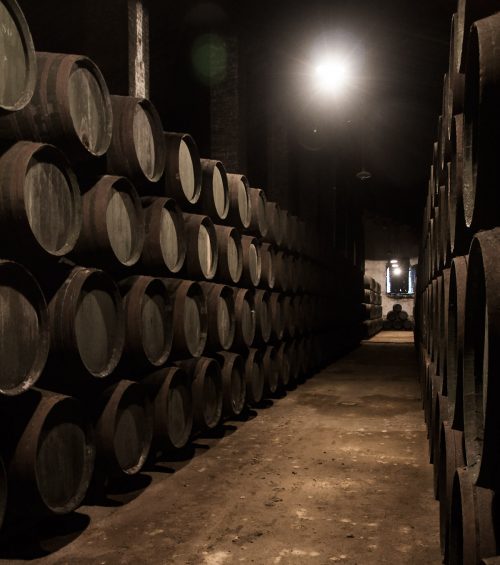
2. Sherry with proud family traditions
Bodegas Emilio Hidalgo is located in a whitewashed building on a small side street in the centre of Jerez. We are asked to wait a minute, as Fernando, with whom we have made an appointment, has to finish up something in the office.
Through a glass window, I can look from the hallway into the office. Along the walls, old, solid oak cabinets stand side by side with desks containing old, heavy typewriters, stacks of thick accounting books and piles of receipts, all jotted down in neat handwriting. I’ve entered a whole new era and the anticipation of the visit is rising dramatically.
Bodegas Emilio Hidalgo was founded in 1874 by nephews José and Emilio and is now run by the fifth generation of the family, cousins Juan Manuel, Emilio and Fernando, who will be showing us around. The Hidalgo family used to have their own vineyards, but they sold them and now buy grape juice from outside.
Fernando is ready and after a walk across the courtyard and through a few production rooms with large mixing tanks and fine old tools on the walls, he heads decisively towards the most important place of all – the “cathedral”.
The cellar-like smell of damp earth and wood as well as stuffiness hits the nostrils as soon as we enter the dark warehouse with all the sherry casks. We squint our eyes and they need a few minutes to adjust to the darkness, coming straight from the strong Andalusian sun.

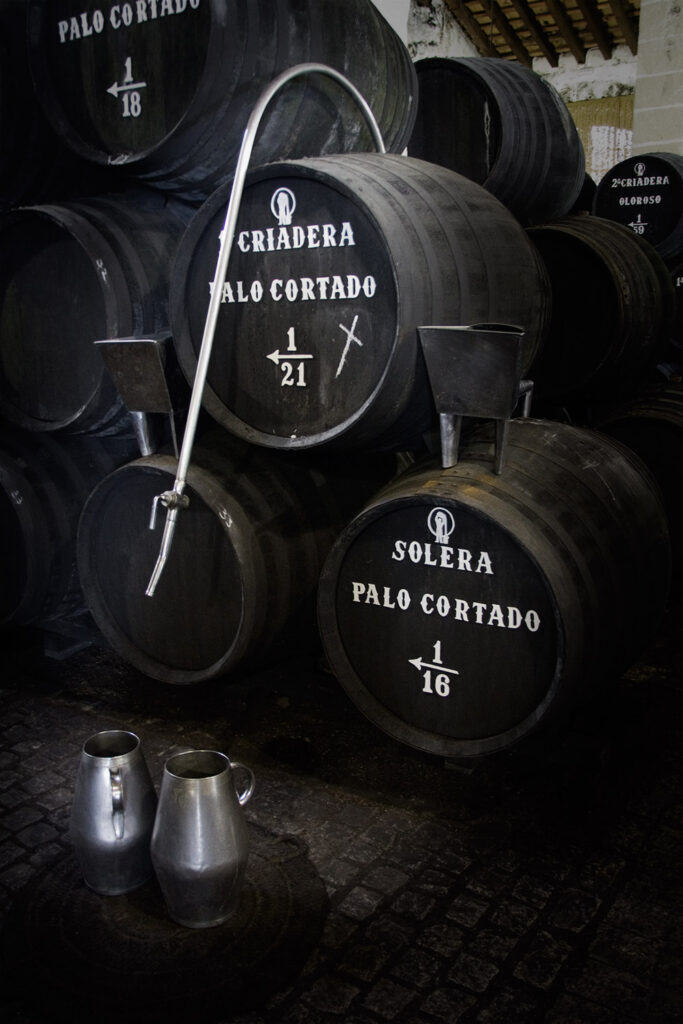
Sherry tasting straight from the barrel
In the “cathedral” Fernando gives us a demonstration of how the Solera system works. The sherry to be bottled and sold is bottled from the bottom layer of casks, called solea (comes from the word suelo, meaning floor), where the oldest sherry in the system has been aged for many years. When the sherry is bottled, it is replaced with the same amount of sherry from the row above, so old wine is mixed with young.
Fernando taps some samples for us – both from the bottom layer and the layer above, so we can taste the difference.
In the “sacristy,” Fernando is extremely generous as he offers sherry. We taste our way through the entire range – from the dry Fino and Amontillado to the full-bodied Palo Cortado and Oloroso sweet Pedro Ximénez, and Hildago’s version of Pedro Ximénez is particularly worth highlighting. The oloroso is also very good.
Fernando also pulls out some of the precious, rarer and more complex drops, including a few bottles of brandy and a 100-year-old Santa Ana Pedro Ximénez 1861 V.O.R.S from an 1861 Solera. We didn’t taste them, but the pride that shone out of his eyes every time he presented a new bottle convinced us that Hidalgo is a family with a great love for their sherry.
Bodegas Emilio Hidalgo
Calle Clavel 29
Tours must be arranged in advance.
3. Exclusive drops and private art collection
Bodegas Tradicion stands out because they are the only ones to produce only the oldest sherries – V.O.S, aged for more than 20 years, V.O.R.S, aged for more than 30 years, and gold and platinum brandies, which are complex and classified as Solera Gran Reserva.
Exclusive is also the small room where we wait for our tour guide. There’s a big, soft sofa under a gold-framed painting, and a tray of sherry and fine brandy decanters on the coffee table.
The tour begins in the “cathedral”, where we get a presentation of Bodegas Tradicion’s products and history. Tradicion buys all grape juice from outside and it is bottled “en rama”, which means raw and unfiltered from the cask. No additives or sulphites are used, other than those used long ago for fermentation.
Bodegas Tradicion is one of the city’s new wineries. It was founded in 1998 by Joaquín Rivero, who inherited the family legacy of one of the city’s oldest bodegas, Bodega CZ, JM Rivero. Jaquín Rivero has restored the building and continued the family tradition and the old production processes – hence the name Tradicion. The heritage of the ancestors means that Tradicion today has wines that are older than the winery itself.
We also get a peek into the small room where Bodegas Tradicion seals each bottle with lacquer and numbers it by hand.
Works by Goya, Velazquez and Picasso
The tour continues to a wine cellar that houses something as unusual as a permanent art exhibition. The art collection consists of over 300 works from the private art collection of the founder, Joaquín Riveros. The collection contains valuable works from the 15th to the 19th century by great Spanish painters such as Goya, Velazquez and Sorolla. Get up close to Goya’s work by Carlos IV and Maria Luisa. The art collection is one of the most valuable in Andalusia and is a major asset for drawing in visitors to Bodegas Tradicion.
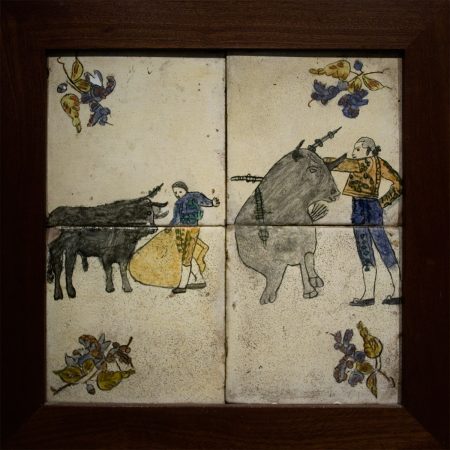
The “sacristy” hides the real ace of the art collection – four tile paintings, created by Pablo Picasso at the age of 8, hanging on the wall behind the covered table with sherry, brandy and tapas waiting for us.
The best brandy in town
In the sacristy we taste four different kinds of the exclusive V.O.R.S sherry – Amontillado, Oloroso, Palo Cortado and Pedro Ximénez as well as two kinds of brandy – SGR Gold and Platinum Gold. The quality of the sherry is top notch, and better than most, but I particularly love Tradicion’s brandy SGR Gold. The round, rich taste is very special and makes me more fond of brandy than I usually am. I end up buying a bottle of the golden drops.
Bodegas Tradicion
Calle Cordobeses 3 (show on map)
Opening hours: Monday to Friday 9am to 5pm, Saturday 10am to 2pm. July and August 8 to 15
Visits must be arranged in advance.
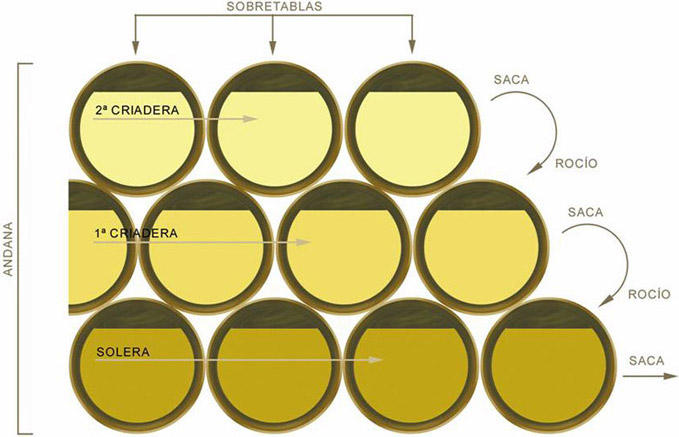
Facts about sherry
- The sherry tradition has existed for over 3000 years. The Phoenicians brought the tradition to Jerez, and over the years different cultures such as the Romans, Moors and Christians have left their mark on it.
- Sherry is produced from the Palomino grape variety as well as Moscatel and Pedro Ximénez, which are sun-dried and thus have a higher sugar content.
- The grapes are harvested from late August to September. In September, a big harvest festival is held in Jerez.
- The sherry matures in the special Solera system, which involves blending old wine with young. The sherry casks are placed in rows of at least three layers (in Jerez four to six layers are typically used). When the sherry is bottled, it’s bottled from the bottom layer – the solera (comes from the word suelo, meaning floor). The bottled wine is replaced again with the same amount from the row above it, and so the process continues until you have reached the top layer. The blending process ensures good quality sherry and the system means that the same casks can be used for up to 200 years.
- The dishes are filled only 4/5, the rest is air. A white layer of yeast, called flor, forms between the wine and the air. The flora gives the wine character, reduces the sugar content and ensures that the wine is not attacked by acetic acid bacteria.
- The sherry is aged in oak barrels for at least three years – often many more.
- The characteristic warehouses on the sherry farms are called “cathedrals” because they resemble the religious buildings of the Andalusian Mudejar tradition.
More travel tips for Jerez de la Frontera
In Jerez de la Frontera you can also watch the Andalusian horses dance and visit the annual flamenco festival in Jerez.
Read also the guide to the different types of sherry and which food to match them with

